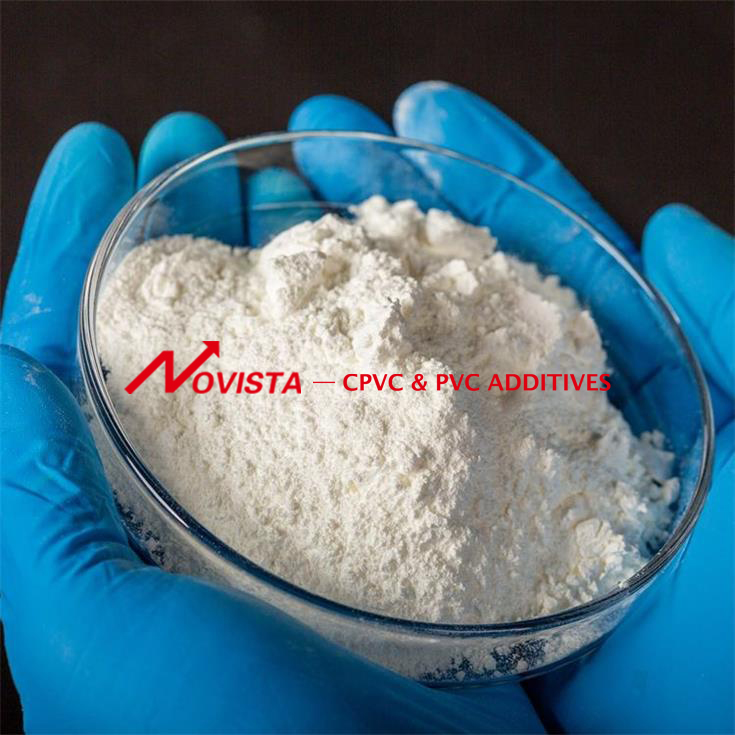Common Issues and Solutions in Pipe Production Using Calcium-Zinc Heat Stabilizers

A. Raised Blotch-Like Protrusions on the Pipe Wall (Bubble-Like)
Possible Causes
1. Feedstock moisture content is too high
2. Contamination in the material
3. Poor plasticization
Solutions
1. Increase mixing temperature and extend mixing time
2. Identify and remove sources of contamination
3. Reduce external lubricant dosage slightly and improve plasticization
B. Rough Inner Surface of the Pipe
Possible Cause
Poor plasticization
Solutions
Reduce external lubricant dosage slightly and improve plasticization
C. Irregular Depressions on the Inner Wall
Possible Causes
1. Contamination in the material
2. Poor plasticization
Solutions
1. Identify and remove sources of contamination
2. Reduce external lubricant dosage slightly and improve plasticization
D. Dull Surface Finish; One Side Shiny, One Side Matte
Possible Causes
1. Poor plasticization
2. Calcium carbonate particle size too large or too widely distributed
3. Deposits adhering to the mandrel bore
4. External lubricant dosage too low
Solutions
1. Reduce external lubricant dosage slightly and improve plasticization
2. Switch to a more suitable grade of CaCO₃
3. Remove deposits and optimize the formulation
4. While ensuring adequate plasticization, increase external lubricant dosage appropriately
E. Uneven Wall Thickness
Possible Causes
1. Uneven plasticization
2. Partial degradation of the material causing uneven output
Solutions
1. Adjust the formulation to improve plasticization uniformity
2. Eliminate degraded material
F. Black Streaks or Spots on the Surface
Possible Causes
1. Improper dispersion of carbon black, pigments, or stabilizer
2. Poor melt flow
Solutions
1. Enhance the mixing process to improve dispersion
2. Adjust formulation and increase both internal and external lubricant levels
G. Discoloration or Burn-Marks on the Surface
Possible Causes
1. Insufficient stability of the material
2. Excessive shear/friction within the melt
Solutions
1. Change PVC resin or stabilizer grade, and increase stabilizer dosage
2. Increase both internal and external lubricant levels
H. Small Voids in the Pipe Cross-Section
Possible Causes
1. Volatile components in the formulation
2. Insufficient stability of the material
3. Excessive friction between the material and equipment
Solutions
1. Reformulate to remove easily volatilized ingredients
2. Change PVC resin or stabilizer grade, and increase stabilizer dosage
3. Increase external lubricant dosage
I. Pipe Too Soft
Possible Causes
1. Over-plasticization
2. Excessive impact-modifier content
Solutions
1. Adjust lubricant ratio and increase external lubricant dosage
2. Reduce impact-modifier dosage
J. Pipe Too Brittle or Breaks Easily
Possible Causes
1. Poor plasticization
2. Contamination in the material
3. Uneven plasticization
Solutions
1. Reduce external lubricant dosage slightly and improve plasticization
2. Identify and remove sources of contamination
3. Adjust the formulation to improve plasticization uniformity





